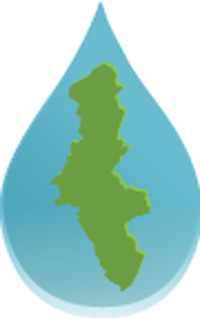 Photo courtesy of Delaware Riverkeeper NetworkMaya van Rossum has been passionate about the environment since she grew up playing in and around Ithan Creek in Villanova. But it wasn’t until she was studying law in college and asked a professor if there was any career path that could combine her two passions—law and the environment—that she first heard the term “environmental law.”
Photo courtesy of Delaware Riverkeeper NetworkMaya van Rossum has been passionate about the environment since she grew up playing in and around Ithan Creek in Villanova. But it wasn’t until she was studying law in college and asked a professor if there was any career path that could combine her two passions—law and the environment—that she first heard the term “environmental law.”
Van Rossum graduated from Pace Law School in 1992, and, while earning her Master of Laws, went to work for the Widener Environmental Law Clinic, which then represented the Delaware Riverkeeper Network (DRN) in litigation. In 1994, she went to work for the DRN, and two years later, she was appointed as Delaware Riverkeeper, a position she still holds.
The job gives van Rossum the daunting responsibility of overseeing the entire Delaware River watershed, including all of the streams that feed into the river, from its source in the Catskills in New York, through Pennsylvania, New Jersey and Delaware, to where it flows into the ocean at the Delaware Bay. “The goal of the organization is to give the river and all of the communities that depend upon the river a voice at the decision-making table,” van Rossum says, “and to make sure that protecting the river is a priority.”
With that expanse comes an equally imposing set of issues—including pollution, over-harvesting of species and fracking—that can be individually harmful and cumulatively devastating. “The sad truth is that there’s no one hot-button issue that, if it were fixed, all would be right with our river and our world,” van Rossum explains. “There’s an accumulation of harms. Just like with the body of a person, when your system’s been compromised by one injury, another injury has an even bigger effect and becomes even harder to heal.”
While the river is healthier than it has been in decades past, van Rossum worries that the successes of environmental organizations such as the DRN may result in a complacent public: “People have the misimpression that everything is okay and they don’t have to continue to be vigilant to protect the river.”
One of the organization’s most important missions is mobilizing citizens to get to the polls and to confront their legislators with their concerns.
“The most important strategy that we’re focused on right now is getting people to understand that electronic communications are fine and helpful, but what we really need are bodies and people,” van Rossum says. “Politicians think they can get away with green rhetoric, but when it comes time to cast a vote, they think that people aren’t paying attention, so they can get away with saying the right thing while doing the wrong thing. We need people to change that.”
 Delaware Riverkeeper Network’s impressive 25-year history
Delaware Riverkeeper Network’s impressive 25-year history
The Delaware River watershed covers hundreds of square miles in four states, and the Delaware Riverkeeper Network (DRN) protects all of it, advocating on behalf of the entire Delaware River watershed and its surrounding communities.
In its 25-year existence, DRN has secured Special Protection Waters designation for the Lower Delaware River from the Water Gap to Washington Crossing, the highest level of protection offered by the Clean Water Act. It also claims numerous successes in habitation preservation, prevention of hazardous discharges (including a 2006 lawsuit to prevent the U.S. Army’s plan to dump nerve agent waste into the river), and the halting of dam and development projects predicted to have negative impacts on the region and its water.
See how you can help at delawareriverkeeper.org.
Story by Shaun Brady.









